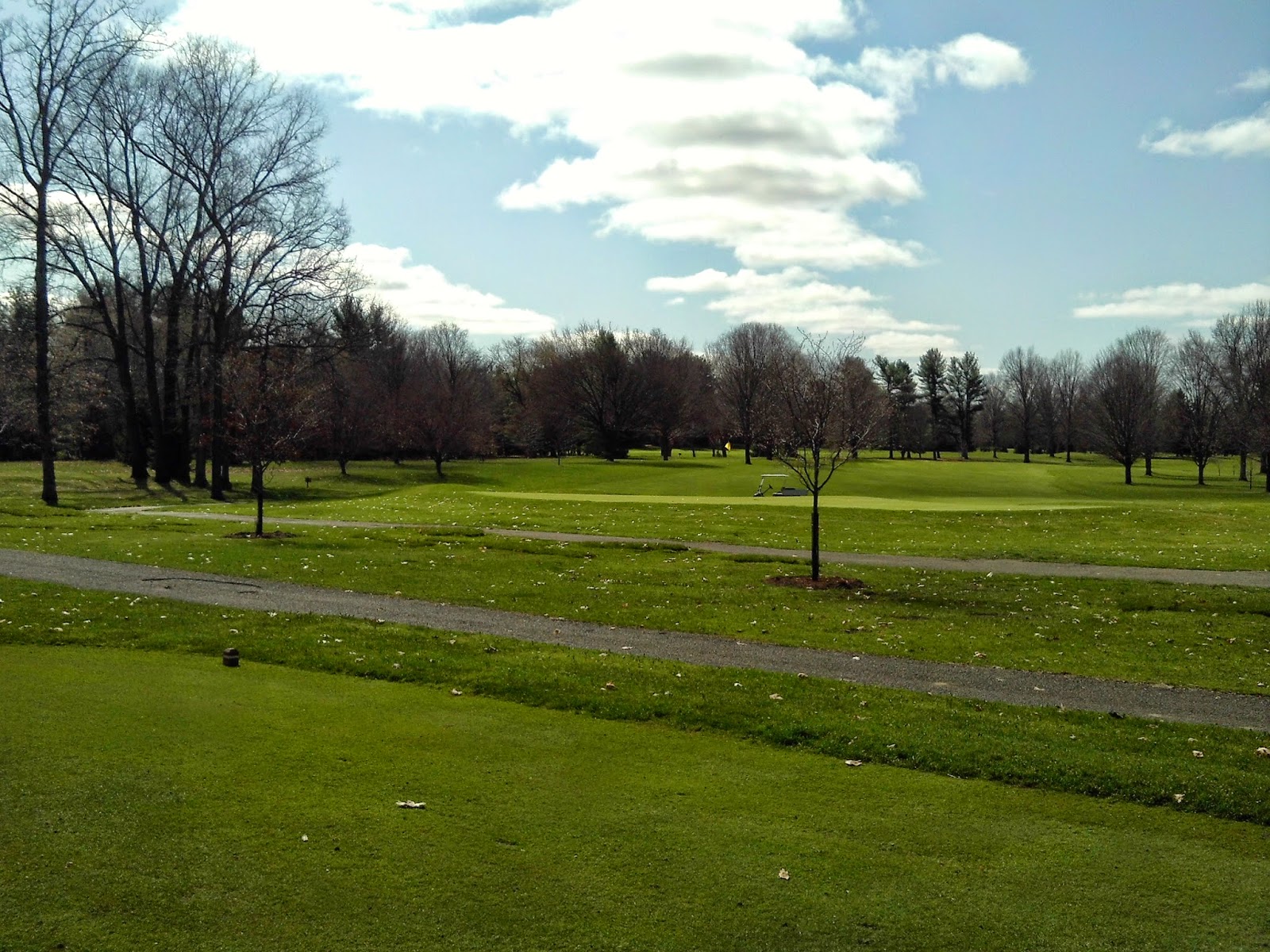April certainly has been full of ups and downs weather wise. From 2" of snow on the 15th of the month to upper 70's and dry on Easter weekend, it has seemed like a roller coaster ride of weather to deal with when executing all that we need to do on the grounds.
 Besides completing our aerification on greens, tees, and fairways successfully, we also are in the process of applying pre- and post-emergent weed control around the golf course. Another critical spring application to our Poa annua greens is for seedhead suppression. Note that this first of two applications does not eliminate the presence of seedheads on our putting surfaces, but is effective in greatly reducing the number of them that affect ballroll. As in previous years, we have place checkplots, such as the one in the left picture, to measure the success of the timing on the application. To learn more about why we place these on certain areas, Greg posted a great blog article here.
Besides completing our aerification on greens, tees, and fairways successfully, we also are in the process of applying pre- and post-emergent weed control around the golf course. Another critical spring application to our Poa annua greens is for seedhead suppression. Note that this first of two applications does not eliminate the presence of seedheads on our putting surfaces, but is effective in greatly reducing the number of them that affect ballroll. As in previous years, we have place checkplots, such as the one in the left picture, to measure the success of the timing on the application. To learn more about why we place these on certain areas, Greg posted a great blog article here.Another project that we have completed is the area between 6 green and 7 tee. Several large trees were removed over the winter and were replaced with four Amelanchier species. These trees will be smaller and more compact, and add a dramatic white background in the spring with its blooms. Sod and seed were added to fill in the bare areas. Many of you have commented on the new look from the green or tee, thank you for those.
 |
| Perpendicular grain on 7 fairway |
 |
| Verticut mower on 1 fairway |
Ryan



No comments:
Post a Comment